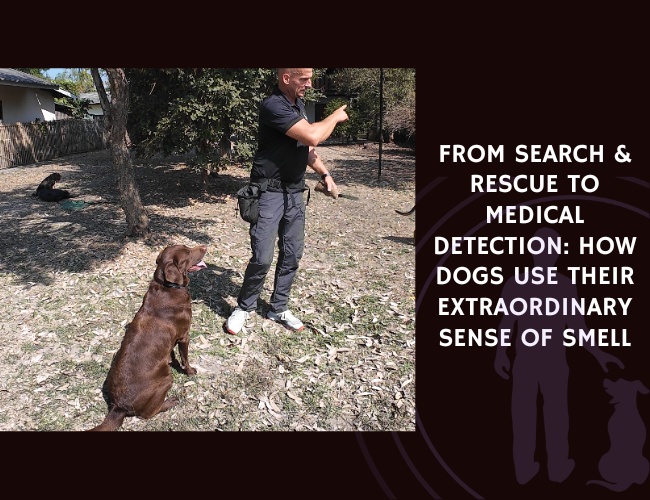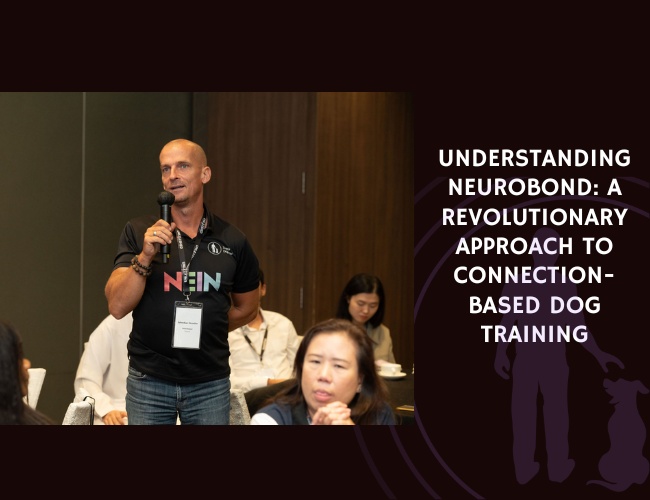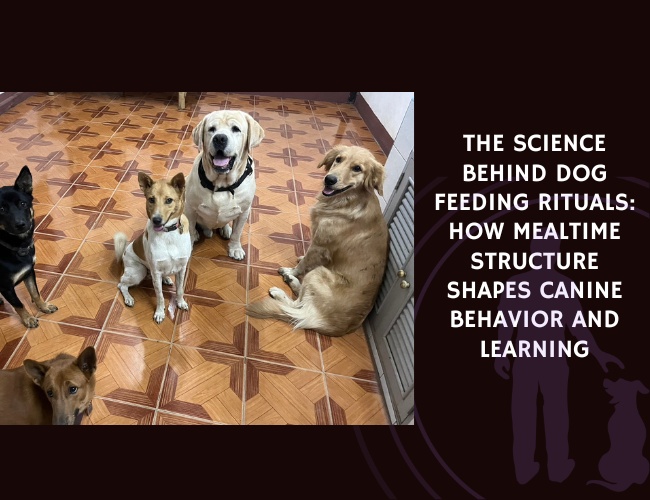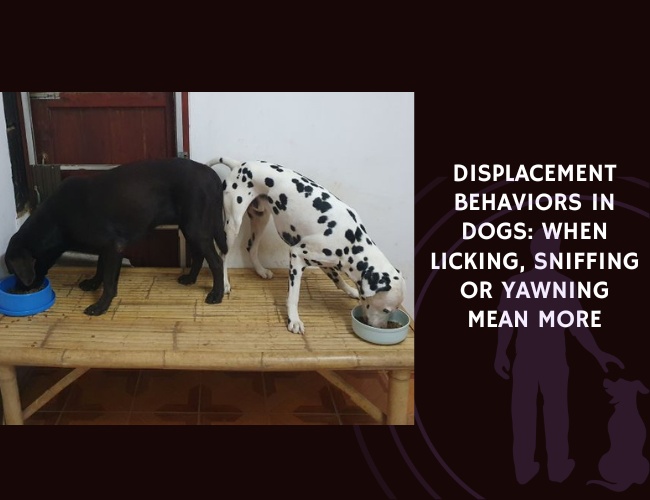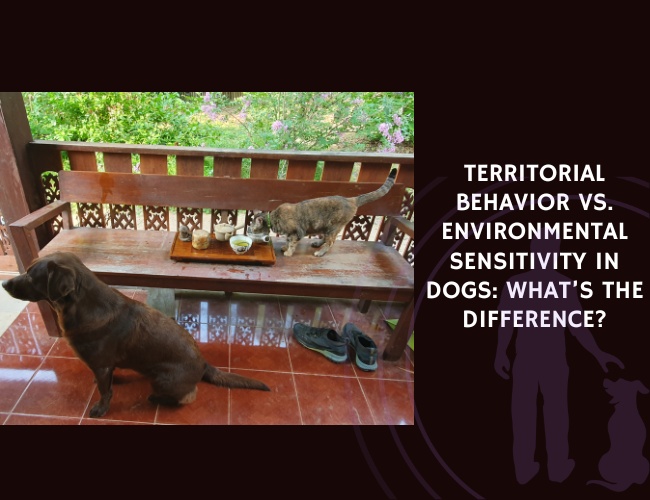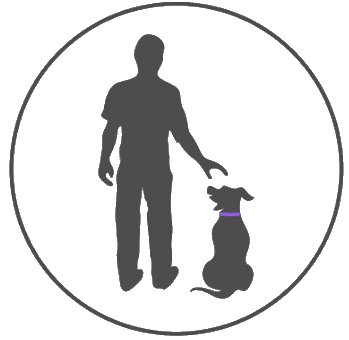The Remarkable Power of a Dog’s Nose
Dogs possess an extraordinary sense of smell, which plays a vital role in their daily lives and various professional applications. This remarkable ability is rooted in their advanced olfactory system, significantly superior to that of humans.
Superior Olfactory Receptors
One of the main reasons dogs excel in scent detection is the vast number of olfactory receptors they possess. Dogs have between 220 and 300 million olfactory receptors, compared to a mere 5 to 6 million in humans. This incredible receptor count allows dogs to detect a wide variety of scents with exceptional precision. Different breeds exhibit varying degrees of olfactory prowess, with Bloodhounds being particularly renowned for their exceptional tracking capabilities.
Enhanced Olfactory Bulb
Not only do dogs have more olfactory receptors, but they also have a significantly larger olfactory bulb relative to their brain size. The olfactory bulb in dogs is proportionally 40 times larger than that in humans. This enlargement facilitates superior processing of scent information, enabling dogs to identify and discriminate between various odors effectively.
Specialized Nasal Structure
The anatomy of a dog’s nose is tailored specifically for scent detection. Dogs’ noses are equipped with a unique nasal structure that includes two distinct airflow pathways—one for breathing and another for smelling. This dual-pathway system enables dogs to continuously analyze odors without interrupting their breathing process.
Jacobson’s Organ
Additionally, dogs have an organ known as Jacobson’s Organ (also called the vomeronasal organ or VNO). This specialized structure is particularly adept at detecting pheromones, which are crucial for social and reproductive communication among animals. Jacobson’s Organ adds another layer of complexity and sensitivity to a dog’s already impressive olfactory toolkit.
Detailing the Prowess
Dogs don’t just detect scents; they map and interpret them. Their moist noses help to trap and hold odor molecules, enhancing their ability to analyze and recognize scents. This ability to detect and interpret a wide array of scents is not only fascinating but also incredibly useful in practical applications.
- Search and Rescue: Dogs are invaluable in search and rescue operations, able to locate people in a variety of challenging environments, whether they are missing persons, disaster survivors, or drowning victims.
- Medical Detection: Dogs are capable of identifying specific types of cancers through breath, urine, or sweat samples. They can also detect changes in blood sugar levels in diabetic individuals and have shown high accuracy in detecting COVID-19 infections through smell.
The latter capabilities highlight the potential of dogs to revolutionize medical diagnostics and emergency response. Their scent detection skills are unparalleled, and their contributions in various fields continue to underscore the importance of their extraordinary olfactory abilities.
Understanding the remarkable power of a dog’s nose opens up numerous possibilities for their use in advanced, real-world applications. From saving lives to aiding in medical diagnostics, dogs’ noses are indeed one of nature’s most potent tools.
How Dogs Process and Map Scents
The Olfactory Brain Power
Dogs’ brains are highly specialized for scent detection. Approximately 40% of a dog’s brain is dedicated to processing smells, compared to a mere 5% in humans. This vast dedication of brain resources underscores the crucial role of olfaction in a dog’s life. Dogs utilize their extraordinary olfactory system to analyze and interpret a multitude of scents, allowing them to create detailed imprints of their environment.
Scent Maps for Long-Term Memory
Dogs possess the remarkable ability to construct intricate “scent maps” of their surroundings, which are stored in their long-term memory. These scent maps help dogs navigate their environment, remember specific locations, and track objects or individuals over time. A dog’s olfactory bulb, the part of the brain responsible for processing scent information, is 40 times larger in proportion to their brain size compared to humans. This remarkable capacity enables dogs to detect, differentiate, and store various scents efficiently.
Separating and Identifying Individual Odors
One of the most fascinating aspects of a dog’s olfactory abilities is their capacity to separate and identify individual odors within complex scent mixtures. Whether it’s the subtle difference between two similar scents or identifying a specific odor amidst a plethora of other smells, dogs excel in breaking down and analyzing these olfactory inputs. This capability is particularly useful in situations like search and rescue missions, where dogs must distinguish the scent of a missing person from other environmental distractions.
Scent Trails and Odor Layering
Another crucial aspect of how dogs process scents is their ability to detect how long an odor has been present and follow scent trails over long distances. Dogs can discern the age of a scent through a process known as odor layering. This means they can distinguish fresh odors from older ones, which aids in tracking movement over time. For instance, a tracking dog can follow a weeks-old scent trail, even in challenging conditions like rain or wind.
Detecting Emotions and Hormones
Dogs are also remarkably attuned to detecting emotions and hormones through changes in body odor. They can sense stress, fear, happiness, and illness in humans, which is why they are often used in therapy and support roles. By recognizing unique scent signatures, dogs can identify familiar individuals, even in crowded or noisy environments.
Olfactory Brain Function in Detail
To understand their superior scent-tracking abilities, it’s essential to delve into the olfactory brain function of dogs. The massive olfactory bulb and extensive brain dedication allow dogs to handle an enormous amount of scent information simultaneously. This processing power enables dogs to ‘see’ the world through their noses, composing a detailed and layered perception of their environment based purely on smells.
Importance of a Dog’s Physical Condition
It’s important to note that a dog’s physical condition can significantly affect their olfactory abilities. Factors such as nasal infections, dehydration, or even fatigue can reduce a dog’s effectiveness in processing and mapping scents. Therefore, maintaining a dog’s health is critical in ensuring they can perform their scent work optimally.
By thoroughly understanding how dogs process and map scents, we can better appreciate their incredible capabilities and leverage them in various applications. Following this, we will explore how these olfactory abilities are employed in real-world applications, such as search and rescue missions and medical detection.
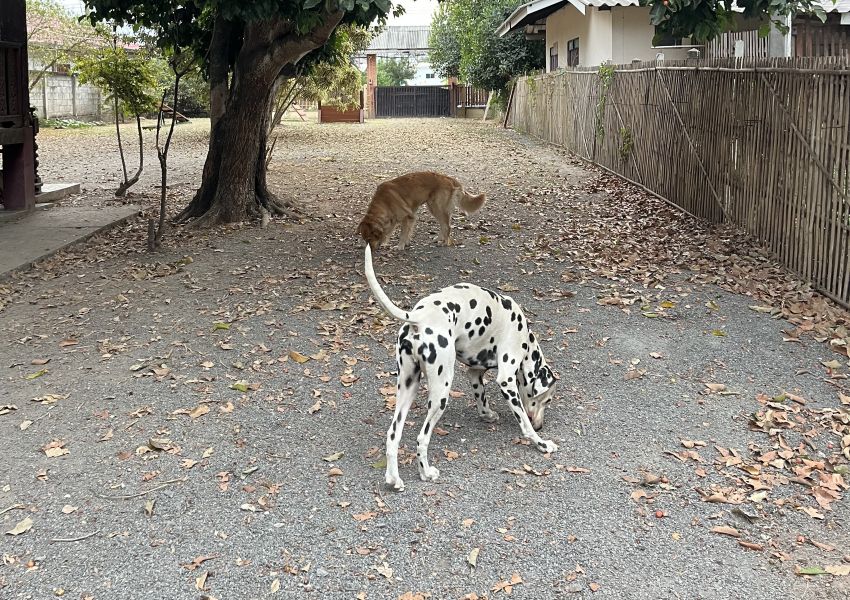
Search and Rescue Applications
Locating Missing Persons and Disaster Survivors
Dogs have established themselves as indispensable in search and rescue (SAR) operations. Their powerful sense of smell enables them to locate missing persons, disaster survivors, and drowning victims with remarkable efficiency. SAR dogs are trained to pick up human scent and can detect individuals hidden underground or buried under rubble. This capability is vital in earthquake zones, collapsed buildings, and other disaster-stricken areas.
Detecting Humans Underground or Under Rubble
Training enables dogs to pinpoint people trapped beneath layers of debris or soil. When disaster strikes, the scent molecules from victims rise to the surface, and SAR dogs can pick up these faint signals. Their noses are adept at distinguishing between various layers of scents, allowing them to focus on the freshest and most relevant odors.
Weather Conditions and Tracking Abilities
While their noses are extraordinary, SAR dogs’ effectiveness can still be influenced by external factors such as weather conditions and time. Wind direction, humidity, and precipitation can affect scent dispersion. A scent trail might be stronger during certain weather patterns and fade more quickly in others.
For instance, a light rain might initially enhance scent molecules on the ground, making the trail easier to follow. However, heavy rainfall could wash away scents entirely. Similarly, fresh scents are more potent and easier for dogs to trace than older ones, which degrade over time.
Real-World Impact of SAR Dogs
The real-world impact of SAR dogs is immense. They have been instrumental in various high-profile rescue operations worldwide:
- Earthquake Response: SAR teams deploying dogs can quickly cover large, inaccessible areas and locate survivors who might otherwise remain undetected for days.
- Floods: During flood events, SAR dogs can find people trapped in submerged structures or carried away by the current.
- Avalanche Rescues: In snowy conditions, dogs can detect the scent of individuals buried under several feet of snow, speeding up the crucial first hours of rescue.
Case Study: 9/11 and Beyond
A notable example of SAR dogs’ effectiveness was the aftermath of the 9/11 attacks. Dogs were pivotal in the search efforts, working tirelessly among the debris to find survivors. Their contribution was invaluable, showcasing the essential role of canines in emergency response teams.
Enhancing SAR through Technology
Integrating technology with canine olfaction is an exciting area of future research. Wearable scent sensors, for instance, could analyze detected odors in real-time, providing handlers with instant feedback. This could enhance the speed and accuracy of SAR operations. Moreover, bioengineering research aims to replicate dogs’ olfactory capabilities, potentially leading to new advancements in artificial scent detection.
Conclusion
Dogs’ natural abilities, combined with advanced training, make them unparalleled in SAR missions. Their skill in detecting and differentiating scents – even in the most challenging conditions – saves countless lives every year. As research and technology continue to evolve, the role of SAR dogs is set to become even more indispensable and efficient.
Medical Detection Capabilities
Dogs’ incredible olfactory abilities extend beyond search and rescue operations to several medical applications. Their noses can detect subtle chemical changes in the human body, making them powerful tools for diagnosing and monitoring various health conditions. Let’s delve into these remarkable capabilities.
Identifying Specific Cancers
Recent studies have demonstrated that dogs can identify specific cancers with impressive accuracy using samples of breath, urine, or sweat. The presence of volatile organic compounds (VOCs) produced by cancer cells emits unique odors that dogs can detect. This ability has been shown in several types of cancers, including:
- Lung Cancer: Dogs can identify lung cancer cells from breath samples with significant accuracy.
- Bladder Cancer: Urine samples from bladder cancer patients contain specific VOCs that dogs can detect.
- Ovarian Cancer: Through sweat samples, trained dogs have correctly identified ovarian cancer cases.
The early detection of cancer through such non-invasive methods holds immense potential for improving patient outcomes and providing timely medical interventions.
Blood Sugar Level Detection
Diabetes is a condition that requires constant monitoring of blood sugar levels. Remarkably, dogs trained as diabetes alert dogs can detect changes in their handlers’ blood sugar levels before it becomes critical. They achieve this by recognizing the specific scent that the body emits during hyperglycemia (high blood sugar) or hypoglycemia (low blood sugar) episodes.
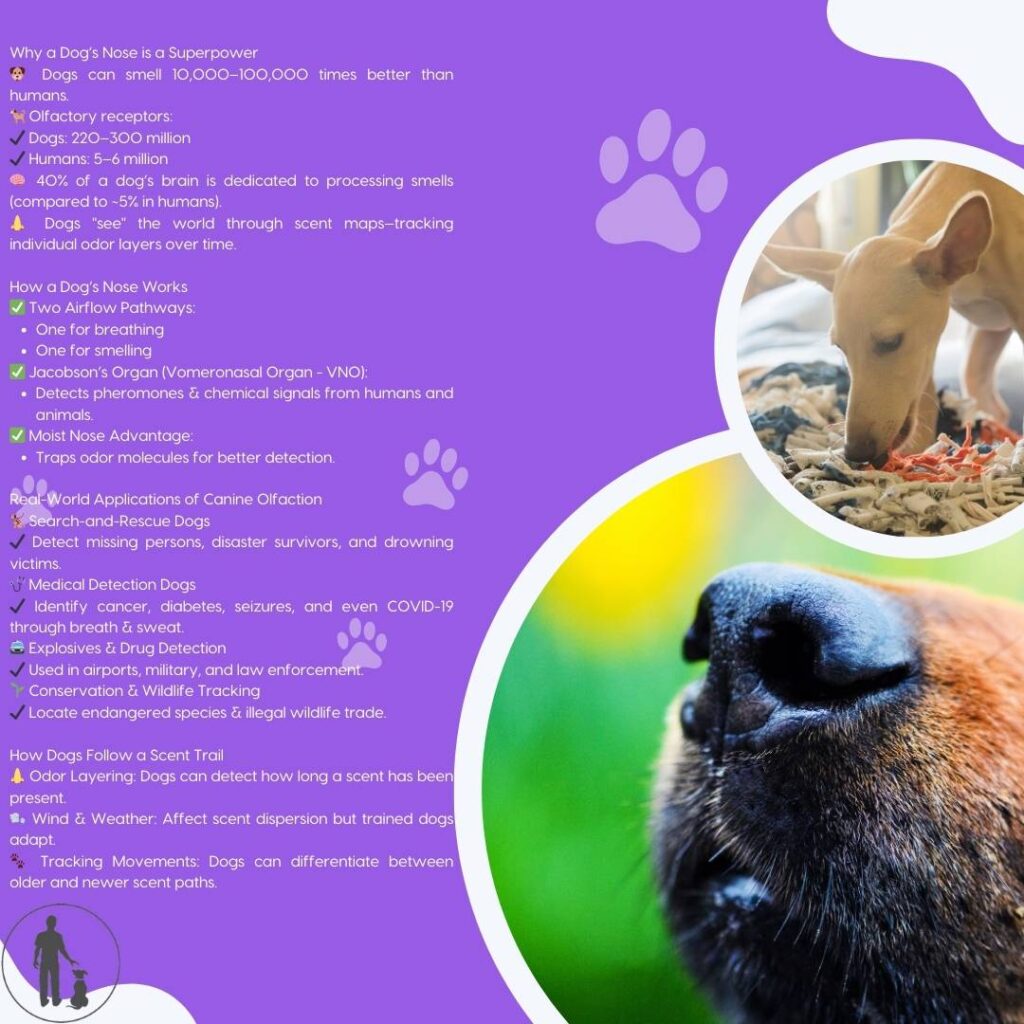
COVID-19 Detection
Recent events have highlighted another essential application of canine olfaction: the detection of COVID-19 infections. Studies have shown that dogs can be trained to identify the virus with high accuracy through the scent of sweat samples from infected individuals. This finding has significant implications for quickly screening large populations and identifying infections early.
Mechanism Behind Medical Detection
Olfactory Processing
Approximately 40% of a dog’s brain is dedicated to processing smells, significantly more than the 5% allocated in human brains. This extensive brainpower allows dogs to detect and differentiate a vast array of scents.
Scent Training Methods
Training dogs for medical detection involves several techniques:
- Scent Association: Pairing the target scent, such as a specific chemical compound from cancer cells, with a reward.
- Discrimination Exercises: Teaching dogs to distinguish the target scent from various other odors.
- Continuous Reinforcement: Regular practice and rewards to maintain and enhance their detection skills.
These training methods enable dogs to consistently identify specific medical conditions with impressive accuracy.
Dogs’ contribution to medical detection showcases the remarkable power of their noses and highlights a crucial intersection of canine capability and human health. This powerful partnership continues to develop, leading to more innovative uses of canine olfaction in various health-related fields.
Top Breeds for Scent Work
When it comes to the remarkable abilities of dogs to use their noses effectively, not all breeds are created equal. Certain breeds have emerged as top performers in scent work due to their innate olfactory prowess, coupled with their trainable nature and eagerness to work. In this chapter, we will explore some of these top breeds, their specialties, and why they stand out in their respective fields.
Bloodhound: The Long-Distance Tracker
Bloodhounds are often regarded as the gold standard for long-distance tracking. Their sense of smell is exceptionally acute, making them capable of following a scent trail that is weeks old. This breed’s extraordinary tracking ability is largely due to their long ears and wrinkled skin, which help trap and concentrate scent particles, enhancing their olfactory detection.
Bloodhounds have been historically utilized in law enforcement and search and rescue operations. Their ability to stay focused on a scent trail for extended periods makes them ideal for locating missing persons over vast distances. Notably, their droopy facial features help capture scents from the environment, funneling them towards their highly sensitive noses.
Beagle and Labrador Retriever: Medical Detection and Customs Work
Beagles and Labrador Retrievers are often the go-to breeds for medical detection and customs work. Both breeds possess an excellent sense of smell and a gentle disposition, making them highly trainable and proficient in environments that require interaction with people.
Beagle
Beagles are small but mighty when it comes to scent detection. Their natural curiosity and keen noses make them perfect for customs and agricultural inspections. They are frequently used in airports to sniff out prohibited items, such as narcotics and contraband food products. Their size and friendly demeanor allow them to work efficiently in crowded spaces without causing alarm.
Labrador Retriever
Labradors are well-regarded for their versatility in various scent-related roles, including medical detection. Their keen sense of smell enables them to identify specific cancers by analyzing samples of breath, urine, or sweat. Labrador Retrievers are also instrumental in detecting changes in blood sugar levels in diabetic patients, often alerting their owners before medical devices do. Their gentle nature and high trainability make them ideal for working closely with people in sensitive settings.
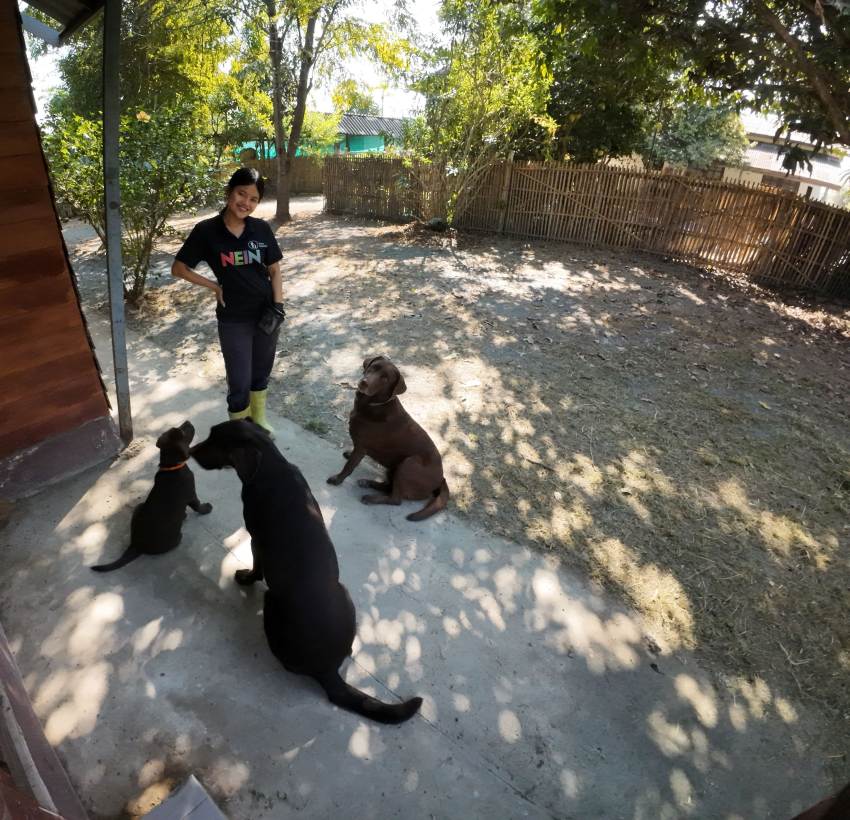
German Shepherd and Belgian Malinois: Police and Military Operations
When it comes to the adrenaline-fueled environments of police and military operations, German Shepherds and Belgian Malinois are the breeds of choice. These dogs not only have a strong sense of smell but also exhibit high levels of intelligence, agility, and loyalty.
German Shepherd
German Shepherds are frequently employed in police K9 units and military forces due to their superior scent detection and unmatched obedience. They excel in detecting explosives, narcotics, and tracking suspects in criminal investigations. German Shepherds are also trained for dual-purpose roles, involving both detection and protection, making them invaluable assets in law enforcement.
Belgian Malinois
Similar to the German Shepherd, Belgian Malinois are known for their speed and efficiency, particularly in bomb and narcotics detection. Their agility and high drive make them ideal for dynamic, fast-paced operations. Belgian Malinois are often chosen for missions requiring rapid deployment and high levels of accuracy, making them indispensable in both military and police scenarios.
By understanding the unique strengths and roles of these top breeds in scent work, we gain a greater appreciation for the remarkable capabilities of canine olfaction. These breeds continue to play critical roles across various fields, from tracking down lost individuals to detecting life-threatening medical conditions.
Their extraordinary abilities highlight the dog’s unparalleled gift of scent, shaping a future where these remarkable animals continue to save and improve lives every day.
Future of Canine Olfaction
Integration of AI with Canine Olfaction Research
The intersection of artificial intelligence (AI) and canine olfaction represents a thrilling frontier in scent detection technology. Researchers are exploring ways AI can replicate or complement the highly nuanced scent detection abilities of dogs. With AI, we aim to analyze scent patterns and behaviors in a manner that might enhance our understanding of how dogs process various smells. This integration could lead to the development of systems that mimic canine olfaction and even improve on certain aspects of scent detection. AI could assist in collecting and interpreting vast amounts of olfactory data, which could be instrumental in numerous fields, from medical diagnostics to environmental monitoring.
Development of Wearable Scent Sensors for Real-Time Odor Analysis
Imagine a future where dogs are equipped with advanced wearable scent sensors that can analyze odors in real-time while they work. These sensors, currently in development, would utilize cutting-edge technology to provide instant feedback on the presence of specific scents. This could be immensely valuable in applications such as search and rescue, enabling teams to make quicker and more informed decisions during time-sensitive missions. The sensors could also aid in medical detection by recognizing the early signs of diseases like cancer or infections, such as COVID-19, much faster than traditional methods.
Wearable scent sensors hold the potential to enhance the precision and efficiency of dogs’ already remarkable olfactory abilities. These devices would not only augment real-time scent analysis but also store scent information, contributing valuable data for ongoing research and development in canine olfaction.

Bioengineering Research to Replicate Dogs’ Olfactory Capabilities
Bioengineering efforts are striving to replicate the unparalleled olfactory capabilities of dogs. By studying the cellular and molecular architecture of a dog’s nose, scientists aim to create artificial systems that can mimic this natural prowess. This research could lead to the development of synthetic olfactory receptors or devices that perform similarly to a dog’s nose, consisting of engineered sensors capable of detecting minute quantities of volatile compounds with high precision.
Such advancements would revolutionize various industries, from healthcare to security.
Bioengineered olfactory systems could be deployed in environments where human presence is limited or hazardous, providing continuous monitoring and detection capabilities. These systems would also be incredibly valuable in areas like narcotics detection, environmental sensing, and even space exploration, where traditional methods fall short.
As we venture further into the future of canine olfaction, it’s clear that combining AI, wearable technology, and bioengineering holds immense promise. These advancements will not only enhance our current capabilities but also open new horizons in scent-based detection and analysis. The remarkable power of a dog’s nose, when augmented with technology, promises a smarter, more efficient world for both humans and their loyal canine companions.The fusion of artificial intelligence (AI) with these cutting-edge technologies presents unparalleled opportunities to advance our understanding and application of olfaction in both animals and machines. AI’s role in interpreting complex scent data, learning patterns, and making predictions based on the subtle nuances of odor profiles can not be overstated. By integrating AI algorithms with wearable scent sensors and bioengineered olfactory systems, the potential to swiftly and accurately identify an expansive range of scents—from environmental pollutants to biomarkers for diseases—would be significantly enhanced.

Moreover, the collaboration between AI and these technologies catalyzes a shift towards more dynamic, responsive, and adaptable olfaction-based solutions. For instance, AI can optimize the sensitivity and selectivity of scent detection, tailoring these systems to recognize specific compounds amid a plethora of background odors. This capability would be particularly transformative in fields like law enforcement, where distinguishing between very similar chemical compounds could mean the difference between identifying a legal substance and a dangerous narcotic.
Beyond practical applications, the ethical and societal implications of this technological evolution are profound. With greater power to monitor and analyze odors comes increased responsibility to safeguard privacy, ensure the accuracy of detections, and mitigate biases in AI models.
Imagine the vast expanse of a wilderness, shrouded in darkness, where a lost hiker’s chances of survival hang in a delicate balance. Or picture a earthquake-stricken city, teetering debris giving way to the faint scent of life beneath. In these critical moments, one thing stands as a beacon of hope: the extraordinary sense of smell that dogs possess. It’s a power that not only saves lives in search and rescue operations but also revolutionizes fields like medical detection.
So, the next time you marvel at a dog’s ability to sniff out a hidden treat, remember that their extraordinary sense of smell extends far beyond playful sniffing and snuffling. It’s a tool that transforms them into heroes, capable of navigating the world in ways we humans can only dream of.
Now, let’s harness that incredible power in our own way. Whether you’re a dog owner, a dog trainer, or someone who appreciates these remarkable creatures, share this post to spread the word about a dog’s unique abilities. Who knows? You might inspire others to recognize the profound impact these animals have on our world. Comment below with your favorite example of a dog’s exceptional nose in action, and let’s celebrate the endless potential of a dog’s extraordinary sense of smell.

